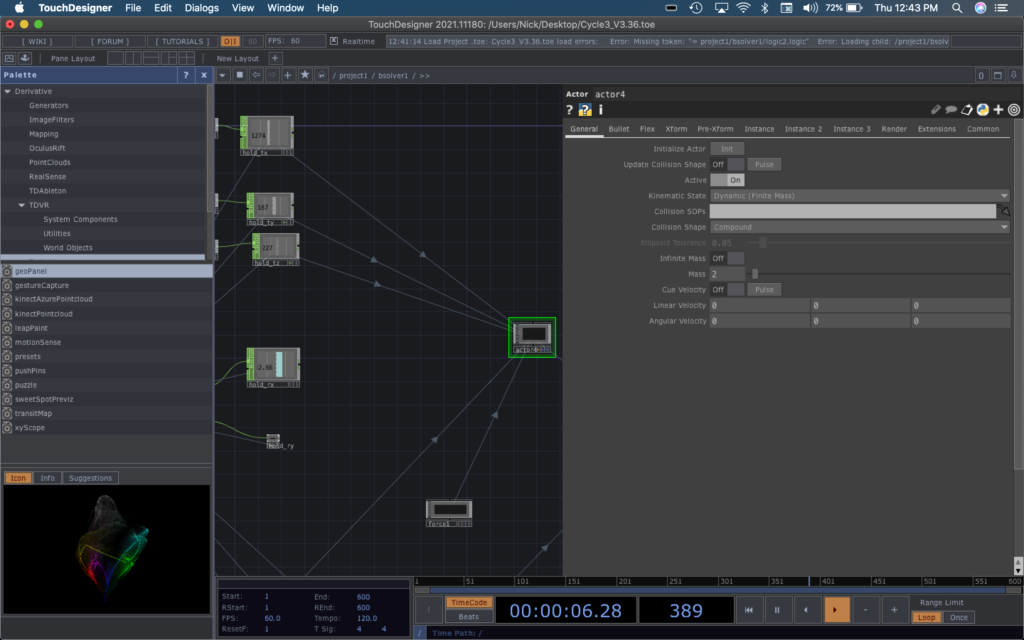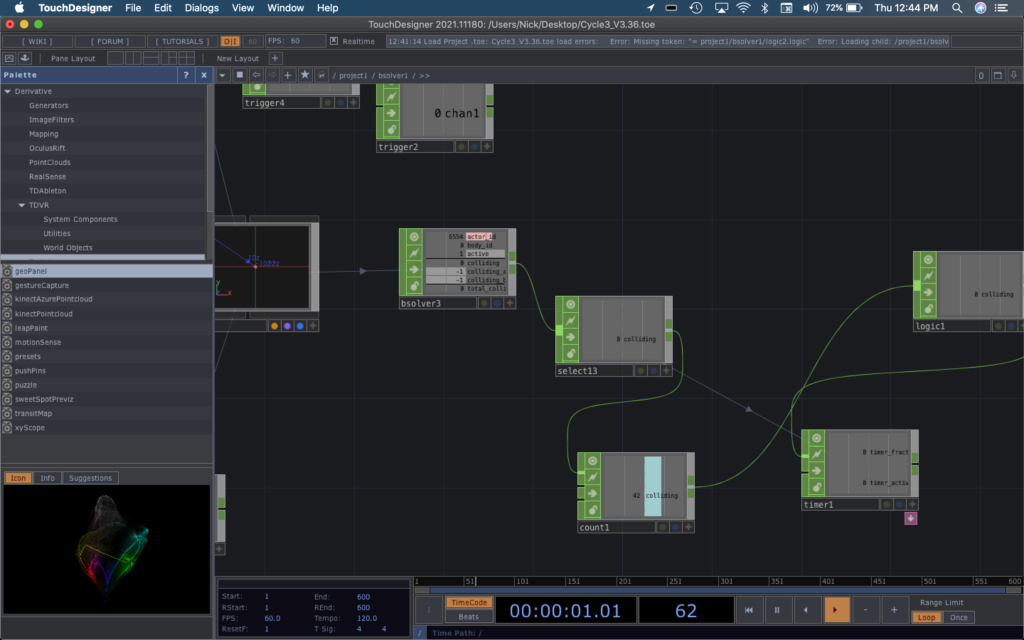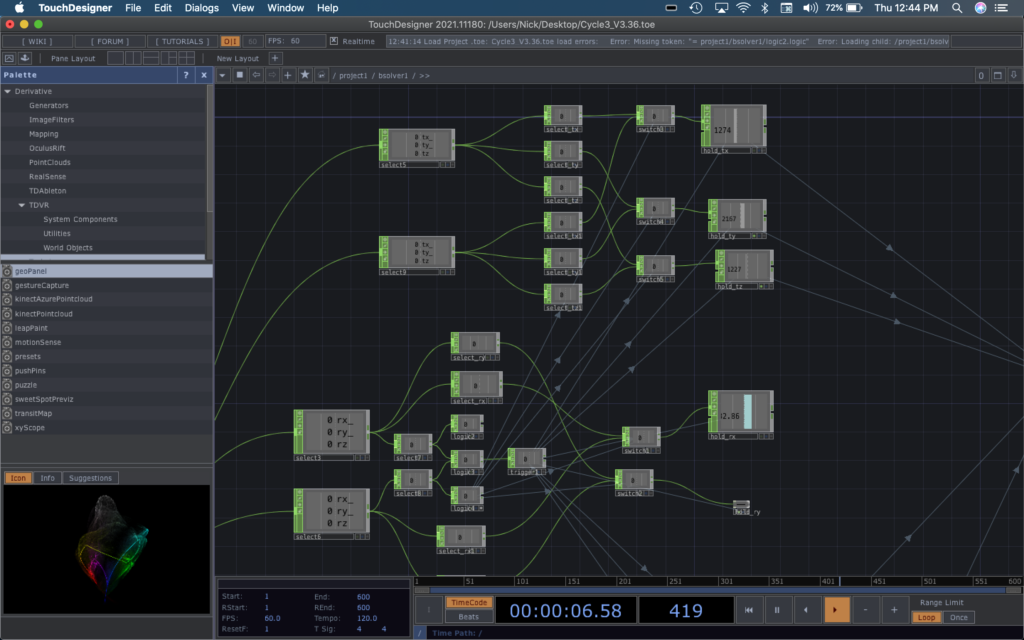Cycle 3
Posted: April 29, 2021 Filed under: Nick Romanowski Leave a comment »Cycle 3 was all about bringing everything together and completing my game environment. My original plan with this project was to replicate the Spider-Man web-slinging attraction coming to Disney California Adventure. That meant adding a story, goals, a set duration, etc. Unfortunately, things proved to be slightly more difficult than I had hoped and I instead just created the basic mechanics and environment for the aforementioned game to take place in.
Picking up where I left off in Cycle 2: My original launch system was a series of complicated algebra equations all tied together to tell a project (a torus) how it should launch. Essentially, a timer would tell the torus what it’s z values where and then it would scrub over a parabola to provide y values and use a slope equation to calculate the x values. The largest problem with this system is that it didn’t create a super realistic launch. The torus would move on its arc path and then just abruptly stop at the end. To create the effect I wanted, I needed to incorporate physics into the project.
Enter the Bullet Solver: TouchDesigner has a COMP entitled Bullet Solver, which is essentially a physics environment based off of an open source physics engine of the same name. How the Bullet Solver works is that it allows you to put “actors” inside of it that have different physics settings (rigid or dynamic) and then when you run the COMP it allows them to interact with one another. This mean that I could launch a projectile and then let it interact with its surrounding environment and forces (mainly gravity) – creating a realistic environment.

The new launching mechanism I constructed bypassed the complex algebra from Cycle 2. This one works by taking in palm rotation values from the leap motion and using those as multipliers on a Force operator inside the Bullet Solver. The Force operator creates a “force” that can influence and propel dynamic bodies inside the solver. A series of timers tell the projectile when it should allow itself to be solely affected by the force and when it should let gravity take over and “fall”.

A randomly placed circle inside the game is the target that you should aim to hit with the projectile. Each time you fire a projectile, it regenerates in a random place calculated by the operator network shown below.

The collisions are detected with another operator that detects when the dynamic body that is target collides with something. The target often spirals out of place and collides with the rigid container shape which are also counted as collisions. To remedy that problem, a counter operator that only allows itself to be increased every so many seconds ensures that only the first collision is counted as a score. When a collision is recorded, it tells a text geometry to render itself in the foreground and showcase the score.

A series of logic gates are used to calculate whether the hands detected by the Leap are the right or left and tells the hand geometries how to display themselves. Another set of gates determines which hand has entered launch position and uses switches to tell the projectile to grab that hands orientation and placement values.


To conclude: the environment allows a player to put their hand perpendicular to the ground and use this gesture to aim and launch a ball at a randomly generated target. They can also move their head around to activate a parallax effect powered by a Kinect connected to Isadora that sends its values via OSC to TouchDesigner. If I were to further this project with a Cycle 4, I would like to add a story and a definitive beginning and end to the game. I created some basic aesthetics with this cycle, using phong materials to add color or basic textures, but I would love to take things further in a way that supported a storyline.